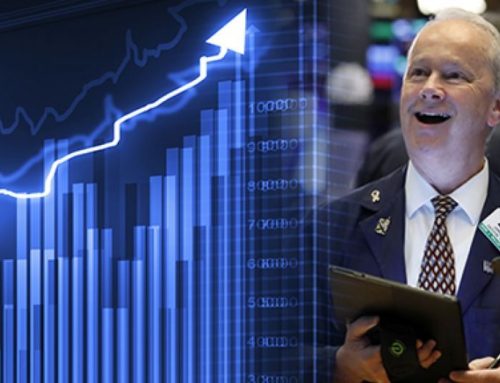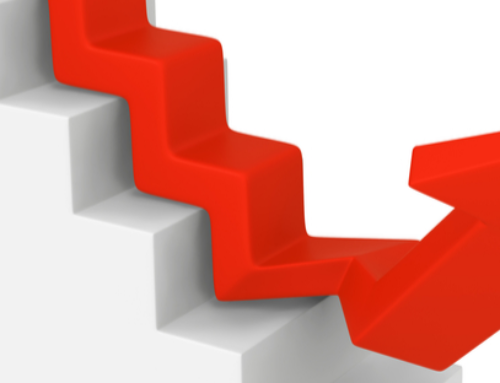Whipsawed markets….
The markets began the Holiday shortened week by plunging Tuesday on news of Italy’s political stand-off. The Dow dropped 1.6% for the day while the S&P500 and Nasdaq also joined in the carnage. Italy’s bonds sold off and yields spiked to 3% while the euro dropped relative to the dollar.
The equity indices recouped much of those losses on Wednesday only to fall again on Thursday on the Trump administration’s decision to impose tariffs on steel and aluminum imports from Mexico, Canada and Europe bringing back concerns of a global trade war.
The employment report was strong on Friday morning which triggered an enthusiastic rally across the board in equities. The Dow finished the week down just 0.49% to 24,635 while the S&P was up 0.49% closing at 2734. Nasdaq was the strongest with a 1.6% gain ending at 7554. The 10-year U.S. treasury had bounced on Italy’s news but sold off a bit to finish with a 2.85% yield. Gold closed at 1295.
The end of easy….
Jamie Dimon, CEO of JPMorgan, dismissed concerns of any market pullback on a call with analysts last week declaring that we are only in the “6th inning” and equities have a long way to go. A number of Wall Street prognosticators agree. Dan Chun, CEO of fund manager Alger, stated in Barron’s that the S&P is only up 2.3% this year but now trades at 16.5 times 12-month forward earning estimates. That is down from 18.2 at the beginning of the year. Chung’s feeling is that if we continue to trade sideways, the markets just become cheaper.
However, Morgan Stanley disagrees with the bulls as the published a report declaring that we are “late cycle” in this bull market. ZeroHedge illustrated a chart by Morgan Stanley showing the changes they are anticipating over the next year. The news is not good and covered expectations for rising inflation, lower PMI’s (production manufacturing index), lack of U.S. policy catalysts, global economic underperformance, government bonds not diversifying portfolios, shrinking central banks’ balance sheets and peak U.S. EPS growth rates. Quite a list!
While high yield and investment grade bond charts are already in a downward slope, Morgan Stanley believes other sectors will soon follow. They believe investors should take steps to reduce risk now declaring the coming period “the end of easy”. While they do think there could be a bit more equity strength, any rally would be a great chance to reposition portfolios.
Bank of America is also anticipating the end of the bull as their Global Wave Indicator just peaked for the 10th time in 25 years. In the past, when this indicator has peaked 5 out of 7 components deteriorated afterwards including confidence in the market and real economic indicators. While they believe a brief downturn is possible, the peak has been followed by sustained downturns the majority of the time.
Our global debt has certainly piled up as both the IMF and IFF reported April statistics with global debt hitting $237 trillion dollars, a new all-time high. We have added $70 trillion over the past decade. Global debt is now 382% of developed countries average GDP and 210% of emerging markets’ GDP. Corporate leverage is also hitting new highs as measured by net debt/EBITDA. With rates rising, bond prices are more likely to fall and therefore will not provide the diversification to equities as they have in past declines.
Jobs, Jobs and more jobs…
Friday’s non-farm payroll number crushed the consensus of 190,000 new jobs as we added 223,000 in May. Private payrolls increased by 218,000 versus ADP’s estimate of 178,000. The headline jobless rate ticked down another 0.1% to 3.8% matching the previous cycle low of April 2000.
Average hourly earnings also increased by 0.3% for the month. However, the year-over-year increase was 2.7% barely ahead of the 2.5% rise in consumer price index. The participation rate is still lagging as it dipped for the third month in a row to 62.7%. There are 95.9 million people not in the labor force – a record.
The aging baby boomer adds to the lower labor participation rate. While the percentage of 65-year-old plus who remain in the work force continues to increase, the swelling tide of boomers hitting retirement continues to weigh down the overall rate of participation.
Barron’s had an entire section dedicated to the challenges of retiring in today’s environment. With meager returns on bonds and other types of fixed income and an aging bull market, living on your portfolio for retirement is more challenging than in recent history. The rule of thumb is to take out 4% of your portfolio from both equities and fixed income leaving room for continued protection against rising inflation.
As we age, health care comprises a larger portion of our budget and if we are lucky, travel and leisure expenses add up as well. Inflation in both these sectors is much greater than overall inflation. Therefore, protecting your buying power over a long period of time should be top of mind. Depending on the advisor, some may suggest taking out only 3% annually from your portfolio. Running future estimates is the best way to really analyze whether or not you are capable of a secure retirement.






Leave A Comment